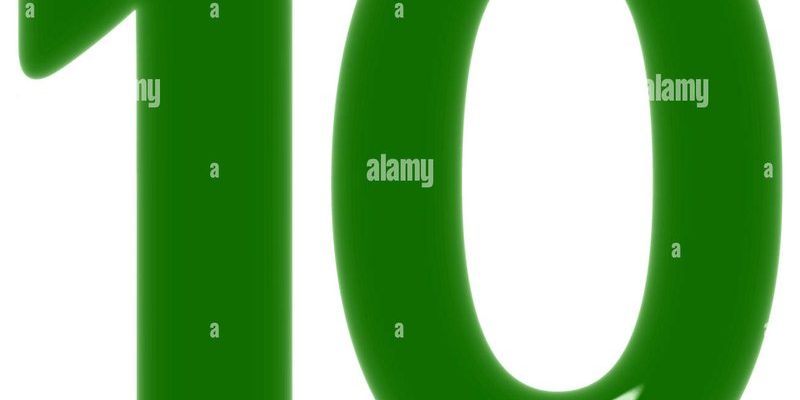
Imagine sitting in a café, sipping on your favorite drink, and chatting about various animals that might look like a koala but have their own quirks and characteristics. It’s pretty fascinating how nature crafts different creatures that sometimes look alike yet are so different when you take a closer look. So, let’s dive into ten animals similar to the koala and see how to tell them apart!
1. Sugar Glider
The sugar glider is a small, nocturnal marsupial found in Australia and New Guinea. These little guys have large eyes and a membrane that allows them to glide from tree to tree, much like a flying squirrel. They may not be as chunky as koalas, but their soft, gray fur and playful nature certainly make them adorable.
Now, how can you tell a sugar glider apart from a koala? First, size is a big giveaway. A sugar glider weighs only about 4-5 ounces, while a koala weighs anywhere from 9 to 30 pounds! Also, sugar gliders are very social and live in groups, whereas koalas are more solitary creatures. If you’re ever lucky enough to see these little gliders in action, you’ll notice how they easily leap through the trees, which is quite a sight!
2. Ringtail Possum
Next up is the ringtail possum, which is also native to Australia. With its strikingly long, curled tail, this animal looks quite different from a koala at first glance. They’re also known for their agile climbing skills and are often seen navigating through the trees.
If you want to spot the differences, look at their fur patterns. Ringtail possums usually have a more varied coloration with darker patches, while koalas are generally more uniformly gray. Another thing to note is their diet; ringtail possums enjoy a diet of fruits and leaves, whereas koalas are picky eaters, mainly feasting on eucalyptus.
3. Quokka
Often referred to as the “world’s happiest animal,” the quokka is a small marsupial native to Australia. They have a round face and a friendly demeanor, making them incredibly photogenic—just like koalas! Quokkas tend to be the size of a domestic cat, sporting a more compact, adorable physique.
You might wonder how to tell them apart. For starters, quokkas are much smaller, generally weighing around 5-11 pounds. Their fur is also a bit coarser and they have a more robust body shape. Koalas, on the other hand, have that signature stocky build. If you see one of these smiling creatures, be sure to snap a photo, but don’t forget to keep your distance to respect their space!
4. Tarsier
The tarsier is a tiny primate found in Southeast Asia. Known for their enormous eyes and long fingers, tarsiers might have the cute factor down pat, but they’re a completely different breed. Unlike koalas that chill in trees munching on leaves, tarsiers are insectivores with a diet mainly consisting of bugs.
When distinguishing between the two, consider their eyes. Tarsiers have incredibly large, round eyes that are almost as big as their heads! Plus, they’re much smaller than koalas, typically weighing less than a pound. Their lively nature makes them fascinating to observe, though they may not cuddle like a koala.
5. Pademelon
The pademelon could be seen as a smaller cousin to the kangaroo, but its resemblance to the koala in terms of habitat makes it interesting to mention. These cute marsupials are found in the forests of Australia and New Guinea, often spotted nibbling on grass and leaves.
To find the differences, look at their body shape. Pademelons have a more slender build compared to the bulkier koala. They also have a shorter tail and are generally more skittish than koalas. While koalas take their time lounging around, pademelons are often more active and quick on their feet.
6. Sloth
The sloth is an animal that captures hearts thanks to its slow, deliberate movements and endearing expressions. Found primarily in Central and South America, sloths spend most of their lives hanging upside down in trees—similar to koalas. Both animals are expert climbers, which adds to the similarities.
If you want to spot a sloth, just look for its long limbs and distinctively slow pace. Unlike the koala’s fluffy round ears, sloths have shorter, less pronounced ears. Additionally, sloths have a slower metabolism, which means they spend a lot of time sleeping—up to 20 hours a day!
7. Pika
Meet the pika, a small herbivorous mammal found in mountainous regions, particularly in Asia and North America. These little creatures have round bodies and short ears, closely resembling a rabbit or a small mouse, but their fur is reminiscent of the koala’s softness.
When comparing the two, size is a key factor. Pikas generally weigh about 6-10 ounces, making them significantly smaller than koalas. They also have a more varied diet, often munching on vegetation, unlike the eucalyptus-loving koala. Plus, while koalas are known for their lazy lounging, pikas tend to be quite active, especially in collecting food during the summer months.
8. Wombat
Wombats are another iconic Australian marsupial that you might confuse with koalas at first glance. These stout animals have a robust build, short legs, and a big, round backside. While they do share a habitat in the bushlands of Australia, their behaviors and lifestyles differ.
To differentiate a wombat from a koala, pay attention to shape and size. Wombats are more squat and muscular, weighing anywhere from 55 to 110 pounds. Unlike koalas, which mostly live in trees, wombats prefer to dig burrows underground. Their herbivorous diet consists mainly of grass, which sets them apart from koalas’ eucalyptus diet.
9. Agouti
The agouti is a rodent found in Central and South America. It may not look like a koala at first, but its size and behavior can remind you of them. Agoutis are known for their long legs and agile movements, which allow them to navigate their forest habitats easily.
In terms of appearance, a detailed lookout can help separate the two. Agoutis are generally more slender, with a longer body compared to the more rounded shape of a koala. They also have a different diet, feeding on fruits, seeds, and nuts, instead of the specialized eucalyptus diet that koalas have. While they both thrive in forested areas, their lifestyles are quite distinct.
10. Tasmanian Devil
Finally, let’s chat about the infamous Tasmanian devil. Known for its fierce temperament and distinctive growl, this carnivorous marsupial is quite different from the herbivorous koala. Tasmanian devils are found only on the island of Tasmania and are more robust with strong jaws aimed at cracking bones.
When comparing them, look for the differences in temperament and diet. While koalas are calm and leisurely, Tasmanian devils are infamous for their loud, aggressive feeding habits, devouring almost anything they can find. Their dark, stocky bodies also stand in stark contrast to the koala’s fluffy, light appearance.
In summary, while the koala holds a special place in the animal kingdom, many animals share traits that make them similar yet fundamentally different. Paying attention to size, shape, diet, and behavior can help you distinguish between these fascinating creatures. So next time you come across one of these animals, you might just think of the cuddly koala and all its unique counterparts!

